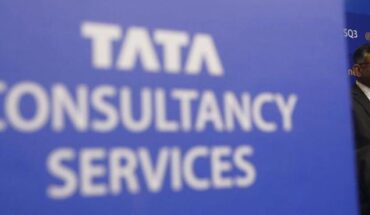By Dominick Rodrigues ;
Mumbai : Come 2030 and India will have witnessed spending of US$ 500 billion (over Rs 37 trillion) annually over the years to accommodate its rapidly-expanding population, even as other large countries also incur equally-large infrastructure spends, according to new economic data in the report ‘A Blueprint for Modern Infrastructure Delivery’, authored by international construction and consultancy company, Mace.
The Mace report highlighted that the global COVID-19 pandemic beginning early 2020 led to infrastructure delivery and its role in society changing dramatically in nature where, for instance, the peak of the COVID-19 pandemic caused a 73% drop in public transport use in India.
+Gradually easing restrictions notwithstanding, networks around the world face longer-term strategic challenges and India is no exception. According to the World Bank, the impact of lockdown measures and behavioural changes in response to COVID-19 caused the most severe global contraction since the Second World War. Economies globally are badly impacted by the virus with many governments positioning infrastructure deployment as core remedy.+
+However, the need to improve delivery is stark. According to Mace’s data, upto 80% of large infrastructure schemes are delivered late and over budget, besides also under-delivering on benefits. These challenges need to be addressed to avoid undermining global infrastructure-led economic recovery as evidence of change through successful delivery is essential to boosting public confidence in the months ahead,+ the report stated.
+Q1 FY21 end views 1,698 Central projects under implementation across India – 469 mega projects (each costing Rs 1000 crore and above) and 1,229 major projects (each costing >Rs 150 crore but <Rs 1000 crore). Of these, 414 projects are suffering from cost overruns of Rs 4,33,762.29 crore – which is 66.71% of their sanctioned cost.+
Recognising this global challenge, Mace interviewed around 40 senior executives to produce its breakthrough report for explaining why projects and programmes across the globe are suffering in this way. In light of the COVID-19 pandemic, the Mace report included new data on both developed and developing countries and outlined its findings in the context of the virus.
+The main issues identified included: Lack of clarity of outcome when deciding on which schemes to take forward, with decisions often being driven by political pressure rather than rigorous cost and benefit analysis; Poor predictive abilities of project teams in their early stages due to pressure for providing fixed point price estimates and programmes well before accurate predictions are possible or realistic; Procurements based on ‘cheapest price’ rather than ‘value’ to fit within unrealistic initial budgets where, on large and complex projects, ‘cheapest price’ procurement is a false economy.+
To shift the balance, the report outlines ten key recommendations for how to put things right, including implementing independent scrutiny panels on big projects, shaking up the way the sector runs procurement, and spending more money upfront to properly examine, scope and plan the scheme.
Anuj Puri, Chairman, ANAROCK Group said that construction halt, labour shortage and revocation of toll collection were some of the major challenges India’s infrastructure sector has faced due to the COVID-19 lockdown since March. “The government’s focus has shifted primarily towards building healthcare infrastructure to accommodate the pandemic’s fallout. Even now, after a staggered easing of lockdown rules over the last months, major infrastructure work across the country has not resumed its usual pace,” he said, adding that “In India, there is a very real need to ensure timely implementation as many of India’s infrastructure projects were already delayed even before the pandemic.”
Jason Millett, CEO for Consultancy, Mace, noted that around the world, good infrastructure is vital for socio-economic prosperity — directly through investment and jobs — and indirectly through things like improvements to transport connectivity and access to clean water.
“India is no different and, unfortunately, not all infrastructure projects are properly planned and delivered — resulting in delays, cost overruns and under-delivery against expected benefits. The negative impact of this is significant as our calculations show that, in India, this could result in an additional cost of Rs 10,820 billion by 2030. Globally, the cost could be as much as US$ 900 billion. This financial burden — combined with a perceived lack of delivery capability due to project delays and mismanagement — risks severely damaging public confidence in the sector, something we cannot afford when community buy-in is so critical to establishing and achieving positive outcomes,” he observed.
“With COVID-19 placing greater emphasis on importance of infrastructure as an economic multiplier, it is more important than ever that we get this right. Our major projects and programmes must have clarity of direction and outcome-focused, decision-making to ensure they do not become a burden, but rather an enabler for post-pandemic growth,” Millett added.






